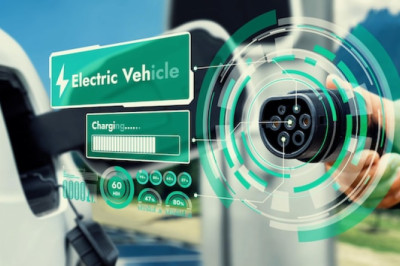Electric vehicles (EVs) are becoming increasingly popular as a sustainable alternative to traditional gasoline-powered cars. However, like all technology, they come with their own set of challenges and considerations. One significant concern for EV owners is how extreme weather conditions, particularly hot weather, can impact the longevity and performance of their vehicle's battery. This article explores six key aspects of how extremely hot weather can affect EV batteries, shedding light on what owners might expect and how they can mitigate potential issues.
Accelerated Chemical Reactions
Batteries operate through chemical reactions, and heat can significantly accelerate these processes. In the case of lithium-ion batteries used in most electric vehicles, high temperatures can cause the electrolyte to break down faster than under normal conditions. This accelerated breakdown can lead to a decrease in the overall lifespan of the battery. The heat speeds up the degradation of both the cathode and anode, which can result in reduced capacity, meaning the battery will not hold as much charge over time. Owners living in or traveling through hot climates may notice this effect more pronouncedly, leading to more frequent charges and potentially earlier battery replacement needs.
Increased Self-Discharge Rates
Batteries naturally lose charge over time, a process known as self-discharge. High temperatures can increase the rate at which this occurs. For EV batteries, this means that the energy stored within the battery could deplete faster when the vehicle is not in use, especially if parked in direct sunlight or in areas with high ambient temperatures. This phenomenon not only affects the immediate usability of the vehicle, requiring more frequent charging but can also contribute to long-term degradation of the battery's health, as it forces the battery to cycle more frequently.
Thermal Management System Strain
Most modern electric vehicles are equipped with advanced thermal management systems designed to keep the battery within its optimal temperature range. However, during extremely hot weather, these systems have to work harder to cool the battery, which can lead to increased energy consumption and reduced overall efficiency. In some cases, the strain on these cooling systems can also lead to premature wear and tear, potentially resulting in costly repairs or replacements. Additionally, if the thermal management system fails to adequately cool the battery, it could lead to overheating, further exacerbating the risk of damage.
Voltage Instability
High temperatures can also lead to voltage instability in EV batteries. This instability can manifest as fluctuations in the battery's ability to deliver power consistently. Such fluctuations can affect the vehicle's performance, leading to issues such as reduced acceleration or, in severe cases, causing the vehicle to enter a protective mode to prevent damage. Voltage instability can stress the battery's components, potentially shortening its lifespan by making it less capable of holding a charge or delivering the necessary power efficiently.
Risk of Thermal Runaway
Thermal runaway is a critical safety concern for EV batteries, where an increase in temperature leads to a self-sustaining series of reactions that can cause the battery to catch fire or even explode. While modern EVs are designed with numerous safety features to prevent this, extremely hot weather can increase the risk of thermal runaway, especially if the battery is damaged or improperly maintained. This risk underscores the importance of regular battery inspections and adherence to manufacturer guidelines for storage and use, particularly in hot climates.
Diminished Charging Efficiency
Extreme heat can also affect how efficiently an EV battery can be charged. High temperatures can slow down the charging process, as both the vehicle and the charging infrastructure may limit charging speed to protect the battery from heat-related damage. This can be particularly inconvenient during long trips where quick charging is necessary. Moreover, the slower charging rates can contribute to longer-term degradation by requiring the battery to spend more time at high states of charge, which is known to accelerate wear.











Comments
0 comment